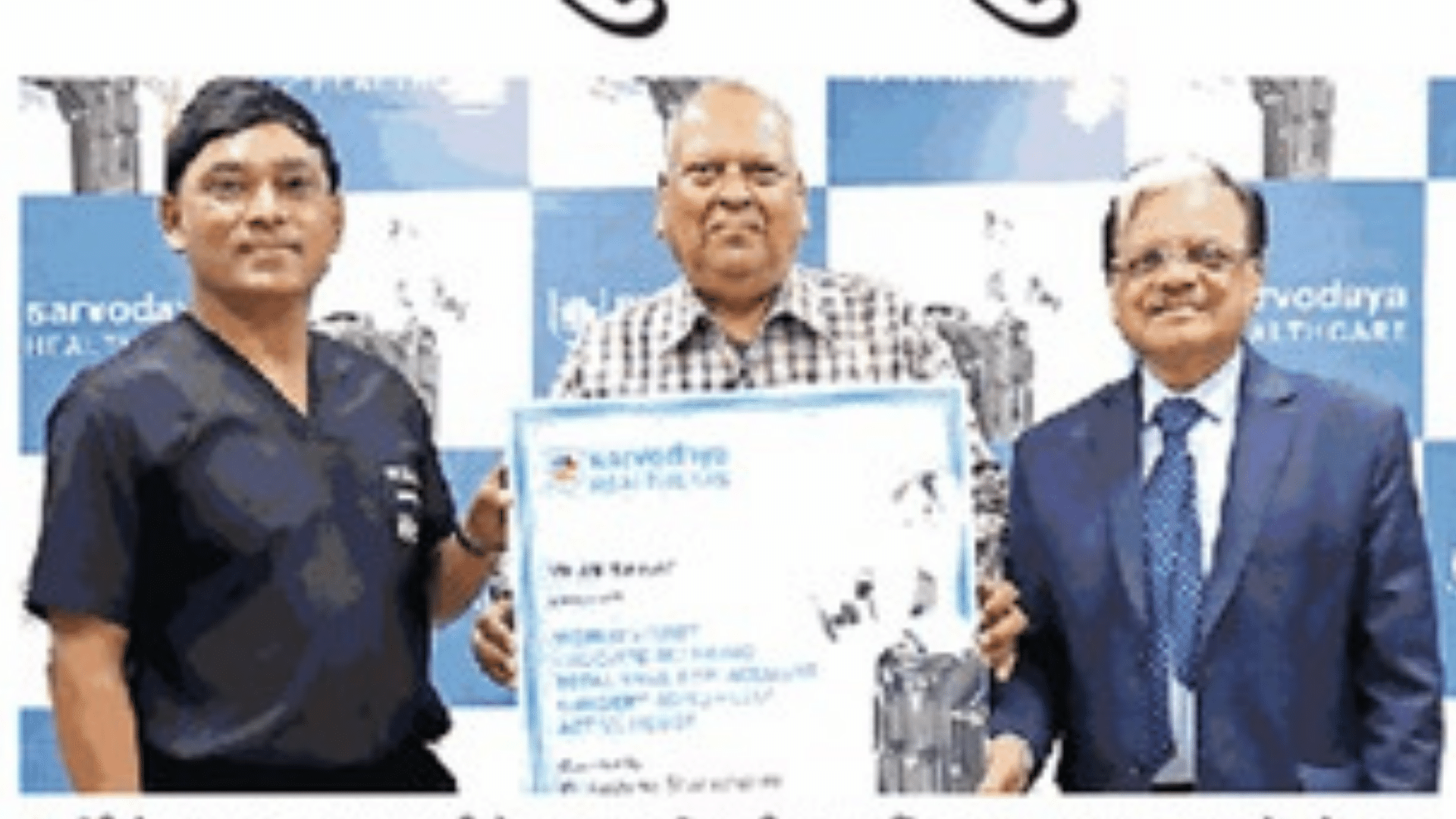
Sarvodaya Hospital, a leading super-specialty hospital at Sector 8, Faridabad, has successfully performed world's first Cruciate-Retaining Total Knee Replacement (TKR) using a Fully Active Joint Replacement Robot. Dr. Sujoy Bhattacharjee, HOD & Director of the hospital’s Centre for Robotic Joint Replacement, used CUVIS Joints - A Fully Active Robot system with specially developed software to perform the feat. The 63-year-old patient Jai Narayan, a retired train driver from Hathras in Uttar Pradesh, was suffering from pain and deformity in both the knees for the last 10 years due to osteoarthritis. He was able to walk on his own, few hours after the surgery.
Said Dr. Rakesh Gupta, Chairman, Sarvodaya Healthcare: “We are all very proud of this achievement, which has put Faridabad on the world medical map and proved the mettle of Indian doctors to the international community. We have applied to the Guinness Book of World Records to register this feat from this part of India. This surgery is also a testimony to our unending efforts to make available the latest technology to our patients, as evidenced by the installation of North India’s first ‘Fully Active’ Joint Replacement Robot for total knee replacement at Sarvodaya Hospital.”
“Cruciates” refer to the two cross-shaped ligaments that exist at the front (anterior) and back (posterior) of the knee, connecting the thigh bone with the shin bone. In conventional robotic-assisted TKR surgeries, both the ligaments have to be sacrificed, due to which the patient has to live with an unnatural feeling around the knee. Dr. Sujoy Bhattacharjee’s breakthrough surgery at Sarvodaya Hospital, Faridabad marks the first time in the world that a patient’s posterior cruciate ligament (PCL) has been successfully retained in a fully active robotic-assisted TKR surgery.
Explained Dr. Sujoy Bhattacharjee, HOD & Director, Centre for Robotic Joint Replacement, Sarvodaya Hospital, Sector 8, Faridabad. He has experience of 13,500+ successful joint replacement surgeries and holds a Limca Book of Record for performing a Total Hip Replacement on a 104 year old patient: “Preserving one or both knee ligaments in total knee replacement is crucial as it gives a natural feel to the knee and helps stabilize the joint. Patients find their operated knee totally natural, making them forget that they are living with a knee transplant, a concept called the ‘Forgotten Knee’. This has not been possible with conventional robotic surgeries for total knee transplant that are currently performed on patients.
He added: “Robot-assisted surgery for knee replacement has huge advantages over conventional method. These include improved accuracy and precision of implant positioning, much less possibility of human errors or soft-tissue injuries, greater operative accuracy and reduced pain after surgery, ensuring early rehabilitation and mobilization of patient. We have now gone one step ahead of the world with the capability to preserve the knee ligaments of the patient in such surgeries.”
In preparation of the surgery, a non-contrast CT (NCCT) scan of the knees is conducted and the desired bone cuts and size of the implant decided. This information is fed into the robot before the actual surgery is performed. During the surgery, the bone cuts are conducted with great precision by the robot, minimizing possibility of any errors.
The patient Jai Narayan was delighted with the outcome of the surgery. “This feels like a second life to me,” he said. “I am finally free of the terrible pain I used to suffer while trying to walk on my damaged knees due to osteoarthritis. I thank the doctors of Sarvodaya Hospital, Faridabad from the bottom of my heart.” He is already walking and will be able to get back to his day-to-day activities within 1-2 weeks of the surgery and back to normal life in a month’s time.
In knee replacement surgery, the arthritic portion of the knee is removed and replaced by an artificial joint that form the new surfaces of the knee joint. During Cuvis Joint Robot total knee replacement, the patient’s joints 3D images are used by the doctor for pre-planning of the surgery personalized to the patient. The doctor uses the robot to select an artificial joint for the patient and insert it accurately. The “fully active” robot reviews the data and cuts the bone precisely with respect to the dimensions of the implant decided during pre-surgery planning stage under the supervision of an experienced surgeon.
Share This News